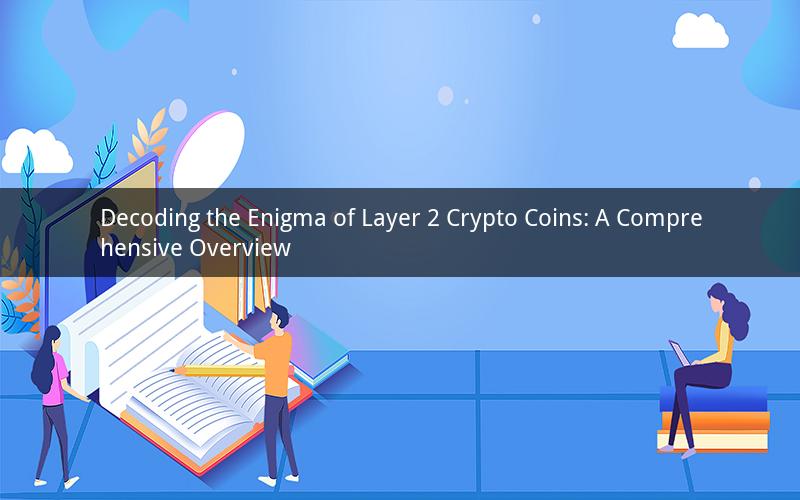
Introduction:
Layer 2 crypto coins have been a hot topic in the blockchain and cryptocurrency community. As the industry continues to evolve, understanding the intricacies of these innovative digital assets is crucial. In this article, we will delve into the world of layer 2 crypto coins, exploring their definition, functionality, benefits, and potential challenges. So, let's unravel the mystery of layer 2 crypto coins.
What are Layer 2 Crypto Coins?
Layer 2 crypto coins are an extension of the blockchain technology, designed to enhance the scalability, security, and efficiency of the underlying blockchain network. Unlike layer 1 blockchains, which are the primary networks like Bitcoin and Ethereum, layer 2 solutions operate on top of these blockchains, creating a secondary network that leverages the security and trust of the underlying blockchain.
How do Layer 2 Crypto Coins Work?
Layer 2 solutions operate by creating off-chain transactions that are then settled on the main blockchain. This process helps reduce the load on the main blockchain, leading to improved transaction speeds and lower fees. There are several popular layer 2 technologies, including the following:
1. Rollups: Rollups combine multiple transactions into a single block, reducing the number of transactions that need to be processed on the main blockchain. This leads to faster and cheaper transactions.
2. State Channels: State channels enable off-chain transactions by allowing users to conduct transactions outside the main blockchain. Once the channel is closed, the final state is updated on the main blockchain.
3. Sidechains: Sidechains operate as separate blockchains that can interact with the main blockchain. This allows for the transfer of value between the two blockchains while maintaining the security of the main blockchain.
Benefits of Layer 2 Crypto Coins
1. Scalability: Layer 2 solutions help address the scalability issues faced by layer 1 blockchains, allowing for faster and more efficient transactions.
2. Lower Fees: By reducing the load on the main blockchain, layer 2 solutions can significantly lower transaction fees, making it more affordable for users to engage in cryptocurrency transactions.
3. Improved User Experience: With faster transactions and lower fees, layer 2 crypto coins can enhance the overall user experience in the blockchain ecosystem.
4. Enhanced Security: Layer 2 solutions often leverage the security of the underlying blockchain, ensuring that transactions remain secure and trustworthy.
Challenges of Layer 2 Crypto Coins
1. Security Concerns: Although layer 2 solutions aim to improve security, they may still be vulnerable to attacks. It is crucial to understand the security measures implemented by each layer 2 technology.
2. Centralization Risks: Some layer 2 solutions, such as state channels, may introduce centralization risks, as the control of the channel is concentrated in the hands of a few participants.
3. Interoperability Issues: As the blockchain ecosystem continues to grow, ensuring interoperability between different layer 2 solutions will be essential to create a cohesive and efficient network.
4. Regulatory Challenges: Layer 2 crypto coins may face regulatory hurdles, as governments around the world continue to grapple with the complexities of cryptocurrency regulation.
5. Market Volatility: Like all cryptocurrencies, layer 2 crypto coins are subject to market volatility, which can affect their value and performance.
Frequently Asked Questions (FAQs)
Q1: What is the difference between layer 1 and layer 2 blockchains?
A1: Layer 1 blockchains are the primary networks, such as Bitcoin and Ethereum, while layer 2 solutions operate on top of these blockchains to enhance scalability, security, and efficiency.
Q2: How do layer 2 crypto coins impact transaction fees?
A2: Layer 2 solutions reduce the load on the main blockchain, leading to lower transaction fees, as users can conduct transactions off-chain and settle them on the main blockchain.
Q3: Are layer 2 crypto coins more secure than layer 1 blockchains?
A3: Layer 2 solutions often leverage the security of the underlying blockchain, but they may still be vulnerable to attacks. It is crucial to understand the security measures implemented by each layer 2 technology.
Q4: Can layer 2 crypto coins replace layer 1 blockchains?
A4: While layer 2 solutions can improve the scalability and efficiency of layer 1 blockchains, it is unlikely that they will completely replace the primary networks in the near future.
Q5: What are some popular layer 2 crypto coins?
A5: Some popular layer 2 crypto coins include Ethereum-based solutions like Optimism, Arbitrum, and Polygon, as well as Bitcoin-based solutions like the Lightning Network and Liquid Network.